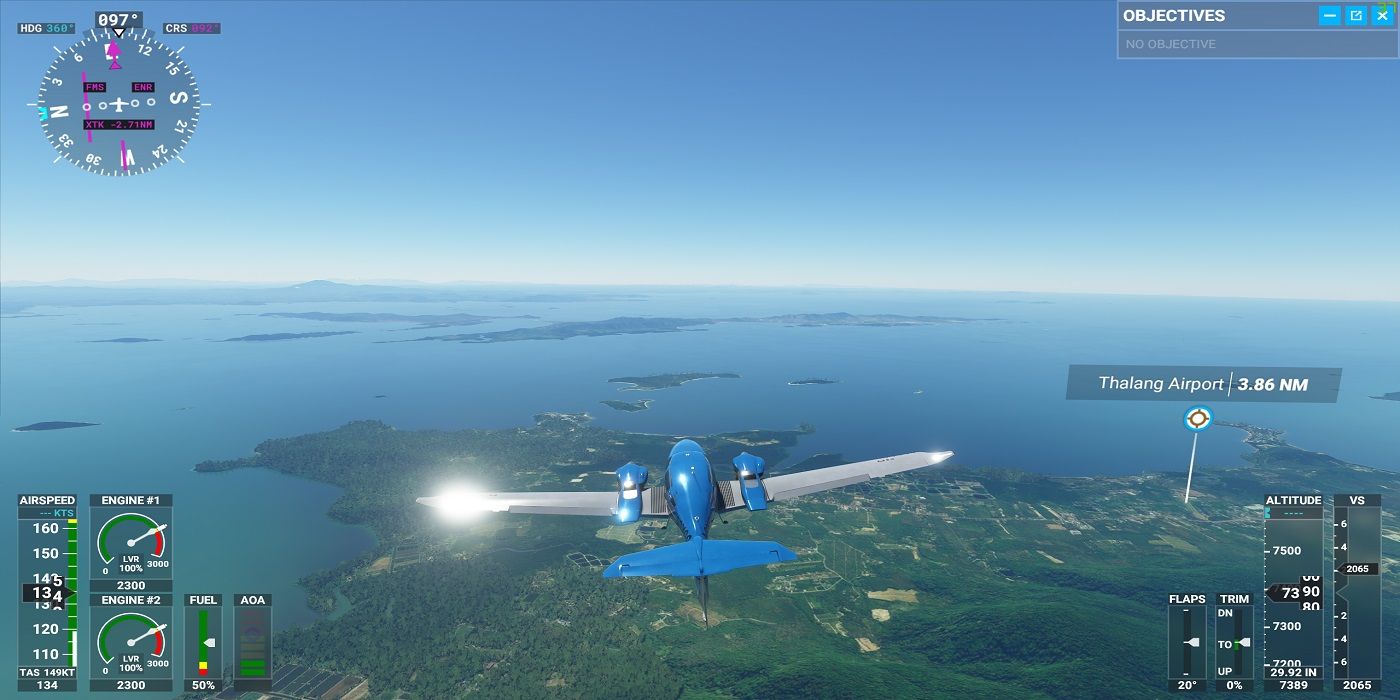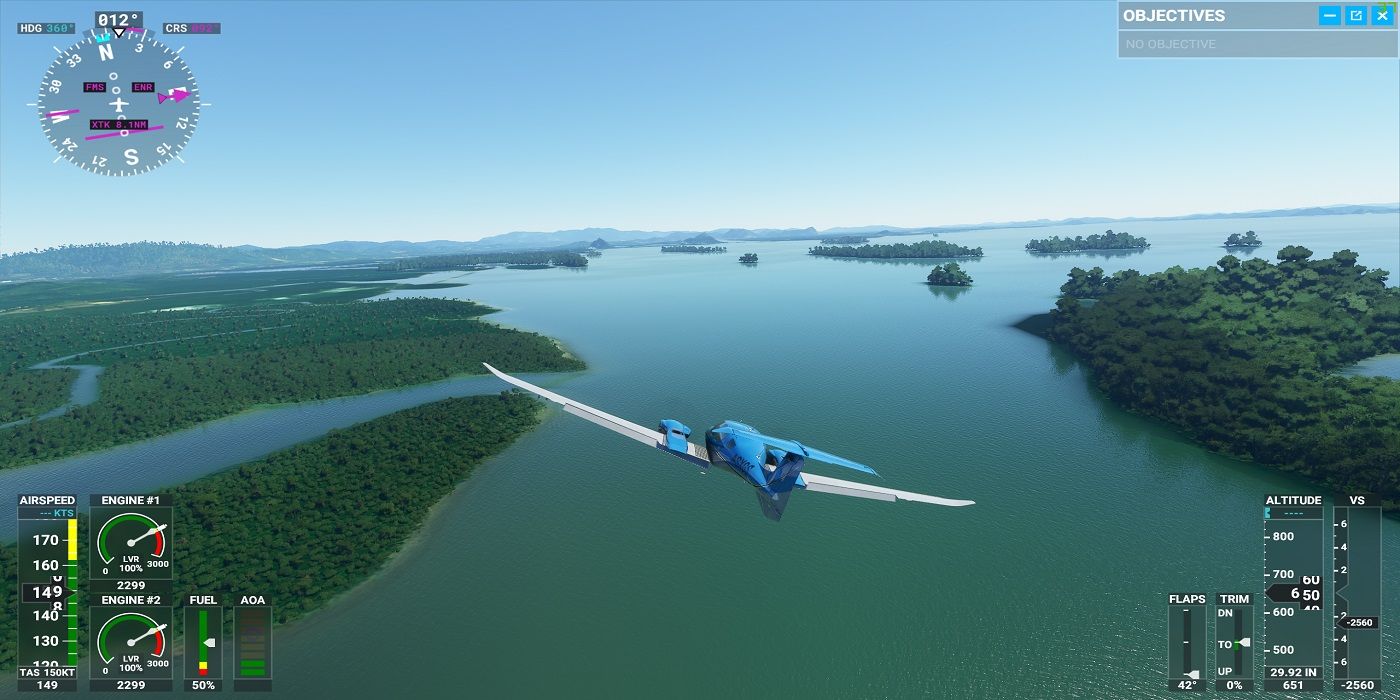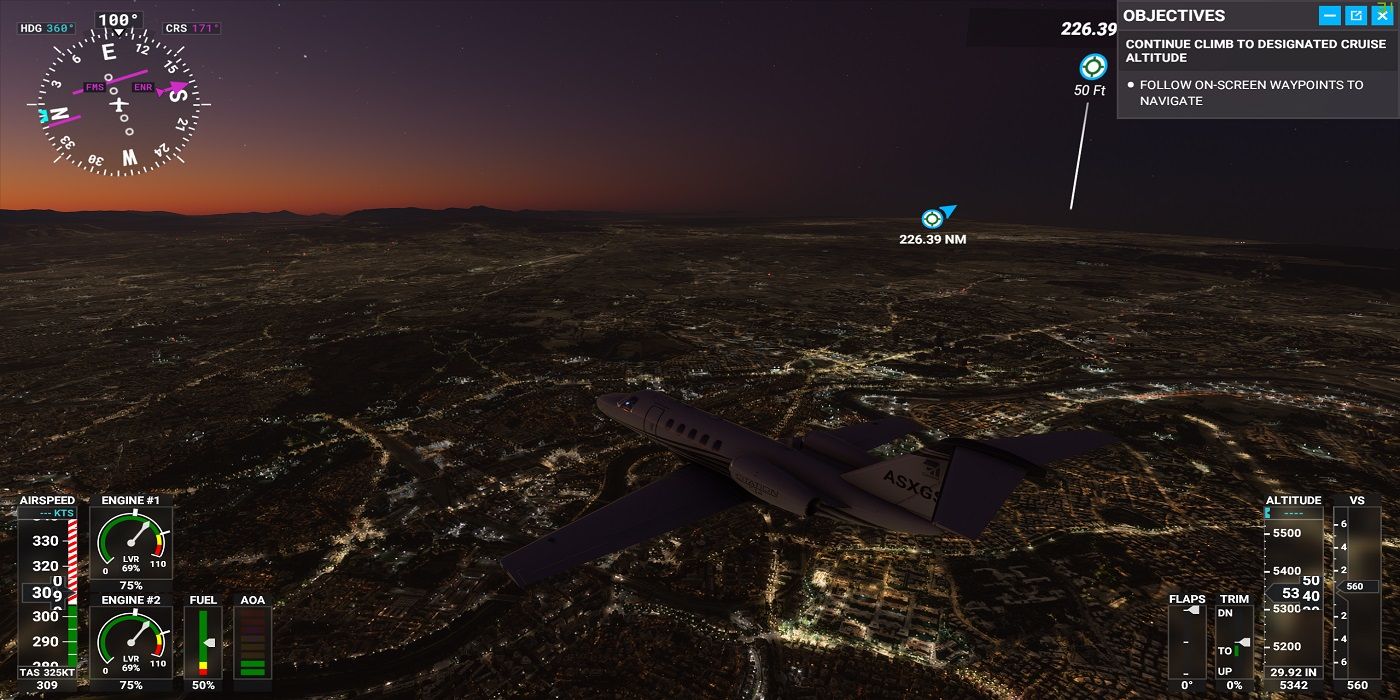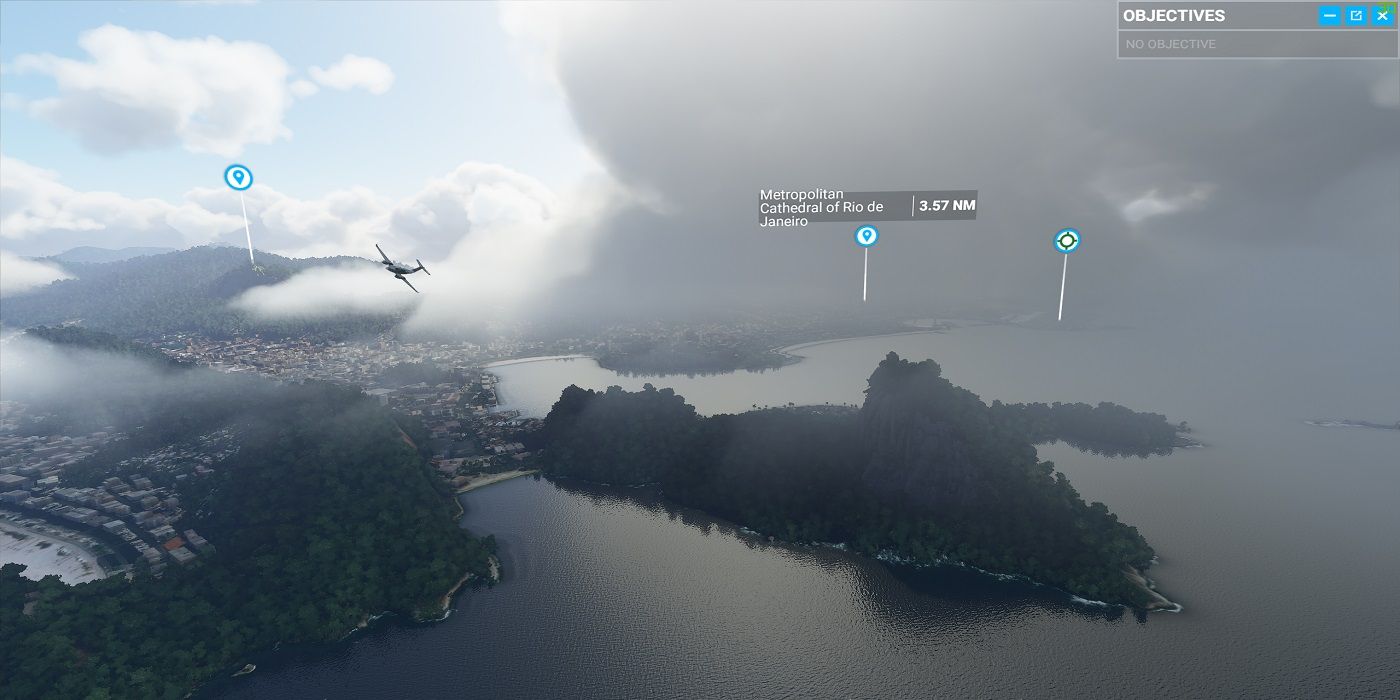Microsoft Flight Simulator 2020 is the long-awaited followup to one of the longest lasting and most influential simulator series ever. At 37 years old, the Flight Simulator series predates Windows, and fans have had to wait 14 years between the last game - Flight Simulator X, which launched in 2006 - and the newest installment which will be available on August 18th. Every time a new Flight Simulator game comes out, enrollments in real-world flight schools spike. This latest installment carries the series' legacy well, and will likely have the same inspiring effect.
For this preview, Game Rant was given access to a preview build of Microsoft Flight Simulator replete with 20 planes to try out and unfettered access to the entire world's expanse of open sky. Many updates are slated to come after launch, and some patches were even made during our preview. New content and fixes will doubtless improve the game, but even now, the preview build offered a very full showing of Flight Simulator's core gameplay and key features.
Visuals
The visuals are, simply put, stunning. Actively generated from satellite and aerial photography, real-time global weather data, and cutting-edge physics and lighting engines, the world as seen from above in Flight Simulator is breathtaking. In some areas, the mountains, buildings, and trees do lack the clarity and sharpness of pre-built game worlds though. For example, buzzing over Yosemite's Half-Dome at low altitude reveals a lumpy mess of smushed textures. However, when one considers that the open world offered in Flight Simulator is the entirety of our own globe and most views are meant to be seen from 20,000 feet, things fall back into perspective. Clouds, water, and weather are all top-notch. It may seem small, but when looking down on the sea from the sky there is no sign of tessellated textures or looped animation- it feels very real.
There is something magical about being able to take off at dusk from one's own hometown and see the exact weather and sunset replicated in game and out the real-world window at the same time. Once night flying gets dull, it's easy to rotate the in-game globe or just change the time slider and take off from somewhere on the other side of the world, enjoying a skittish prop-plane flight over sunny islands in Thailand, in our case. Some areas are more accurately mapped than others, simply due to real-world satellite mapping data, but that will only improve with time. The planes and their cockpits, too, are rendered in near-perfect accuracy.
Controls and Gameplay
Playing on PC, Game Rant had access to a plug-in flight stick, an Xbox controller, and the keyboard. Whichever controller is used, it is also possible to use the first-person camera to manipulate the in-cockpit controls manually for maximum realism and challenge. The controller is the easiest and most intuitive way to fly right now, but hardcore simmers will want a good, modern flight stick combined with a keyboard to input more obscure commands. Much like a wheel for racing games, once one gets accustomed to a flight stick, it is the only real way to play.
There are so many controls that the menu for key bindings has a search function, which is absolutely necessary. That of course also means a great deal of customization. With a controller, though, the tutorial is a breeze, and picking up and flying any plane is feasible at a novice level. Landing is, as always, the hard part.
Gameplay is what it says on the box. Players will fly planes, fly more planes, and maybe even buy more planes to fly. There is no story or career mode, no real progression, and no objectives. Flight Simulator is the perfect Earth-sized sandbox for hardcore simmers, but gamers looking to complete a narrative or unlock customization options will be disappointed. Even so, it is strangely addictive to slowly learn the perfectly-replicated controls inside an aircraft's cockpit, nail a smooth takeoff, and soar over world landmarks in unrivaled realism. More advanced play, like flying without waypoints and only using visible landmarks to navigate, or setting turbulence and mechanical failures to occur mid-flight, is where the game really opens up.
Features and the Future
Currently, players can take off or land at any airport in the world, or start their flight already midair at any geographical point. There is real-time weather and lighting, but an active pause menu allows players to freeze time and move the camera, change the weather, raise or lower fuel levels, and manipulate other options at will. Other planes roam the sky based on real-time flight data, and players can even set malfunctions or various weather phenomena to take place at a chosen point in their flight. This only scratches the surface of available features, and there are even more to come.
The future for Flight Simulator is bright. There will be VR support, active paid mod support, and, most excitingly, pilot/co-pilot co-op. New features, new planes to fly, and a constantly-updated world map that will grow ever-more accurate will only enhance the already robust experience. There are plenty of challenges, and the main attraction is still the open world's free-flight mode.
Microsoft Flight Simulator 2020 is set to launch August 18th on PC and Xbox One.




